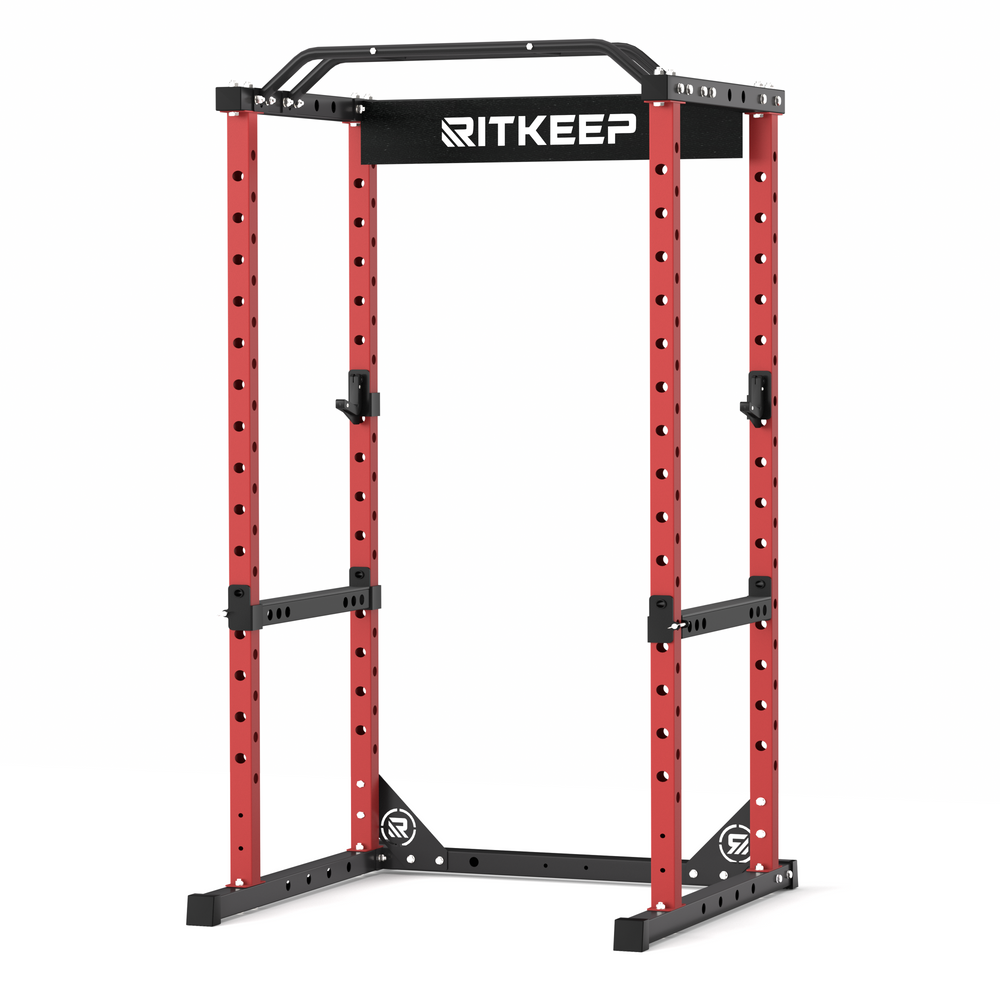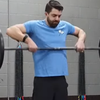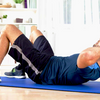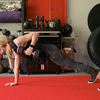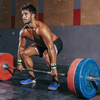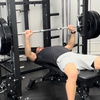Barbell Squat Guide: How to Do Barbell Back Squats
Barbell squats are one of the most effective exercises you can include in your fitness routine. As a foundational movement in strength training, they target multiple muscle groups, help improve overall body strength, and offer numerous health benefits. Whether you're a beginner or an experienced lifter, mastering the barbell squat is essential for building a strong, functional body. In this blog post, we'll dive into the benefits of squats, the muscles they target, and the proper technique to perform them safely and effectively.
What Muscles Do Squats Work?
The barbell squat is one of the most effective lower-body exercises you can do. Instead of having to perform multiple leg exercises to target different muscles, you can work all of them at once with this time-saver. The muscles of your legs, hips, and thighs provide most of the power in the barbell squat. Your hamstrings, glutes, quadriceps, hip flexors, and adductors will all be engaged during different stages of the exercise. And your calf muscles get worked at the bottom of each rep.
Although your lower body may benefit the most from a barbell squat, it truly is a full-body exercise. For example, your abdominal muscles come into play to keep your spine neutral and to maintain stability. The same goes for your lower back muscles, especially the erector spinae, which engages to maintain correct form.
Finally, although barbell squats by themselves aren't the best choice if your goal is a jacked upper body, your arms do get an isometric workout from them. This is because your forearms, biceps, and triceps are all utilized in keeping the bar stable, making barbell squats a great compound exercise for overall strength.
- Quadriceps (Front Thighs): The quadriceps are the primary muscles worked during squats. They are responsible for straightening your knee as you push upward from the squat position.
- Hamstrings (Back Thighs): The hamstrings assist in bending the knee and also help stabilize the body as you squat down and rise up.
- Glutes (Buttocks): The glutes are heavily engaged in barbell squats, particularly when rising from the squat position, providing power and strength.
- Calves: The calf muscles work to stabilize your body as you lower and raise yourself in the squat.
- Core Muscles (Abs and Lower Back): The core stabilizes your torso during the squat, helping to maintain an upright position. The muscles of the lower back (erector spinae) also play a key role in maintaining posture.
- Adductors (Inner Thighs): These muscles help control the squat motion and assist in stabilizing your legs as you lower your body.

Benefits of Squats
1. Strengthens Your Core
While squats with weights mainly target the lower body, they also engage the core, particularly the abdominals and lower back. The act of stabilizing the torso during the squat movement forces these muscles to engage, helping to improve overall core strength and stability. Having strong core muscles can make everyday movements like turning, bending, and even standing easier. Not only that, but a strong core can improve your balance, ease pain in your low back, and also make it easier to maintain good posture.
2. Boosts Athletic Performance
Barbell squats help improve performance in sports and other physical activities. By increasing strength in the legs and core, squats can enhance your ability to jump, sprint, and change direction quickly. Whether you're into football, basketball, or track, squats for fitness can take your performance to the next level.
3. High calorie burn
Calorie burning is often associated with cardio exercises like running or cycling, but high-intensity compound movements like squats can be just as effective—if not more. Because squats engage large muscle groups simultaneously, they elevate your heart rate and boost metabolism, making them a powerful tool for fat loss. In short, squatting hard doesn't just build muscle—it burns fat and helps reshape your body.
4. Opportunity for improvement
To perfect your form during a barbell squat, you'll need to make sure each muscle used is up to the task. Because the squat exercise involves so many different muscle groups, your performance in a barbell squat can help identify where your workout routine needs improvement.
5. Better form in other exercises
Practicing the barbell squat will improve your form in other weight training exercises, such as the deadlift and bench press. But even if your main goal is running faster or jumping higher rather than building pure muscle power, the barbell squat should still have a place in your workout routine.
Who Should Do Squats?
Short answer: everyone.
Unless you are medically contraindicated from performing the squat exercise, there are simply too many benefits to ignore. Every day fitness enthusiasts, including those who participate in bodybuilding, powerlifting, and CrossFit, will benefit greatly from the improvements barbell squat exercises can provide regarding muscle size and strength.
Studies show that athletes will especially benefit from performing squats regularly. A 2013 study published in the Journal of Sports Science and Medicine sought "to determine the effects of body mass-based squat training on body composition, muscular strength and motor fitness in adolescent boys." The results indicated that "squat training for 8 weeks is a feasible and effective method for improving body composition and muscular strength of the knee extensors, and jump performance," as vertical jump height saw a 3.4% improvement; an improvement which would be greatly beneficial in sports such as basketball, volleyball, and track and field.

Who Shouldn't Do Squats?
Most individuals will benefit from incorporating the squat workout into their workout routine, but some folks might be better off steering clear.
A 2010 review published in the Journal of Strength and Conditioning Research breaks down the kinematics of this common compound movement, detailing the role played by the ankle, the ACL, the hips, and the spine. The study warns that poor form places undue stress at these locations, especially when placed under an external load like a barbell, contributing to injury.
Those who have previously suffered a knee, hip, back, or ankle injury might need to take special precautions before squatting or refrain altogether for this reason. Medical conditions like arthritis and osteoporosis could complicate one's ability to squat as well. Some physicians and physical therapists might be apt to recommend squatting under certain conditions to encourage recovery, but some may warn against squatting altogether. If you have previously suffered an injury or suffer from a medical condition that could preclude you from squatting, consult a medical professional before adding squats to your exercise regimen.
How to do a Barbell Squat
1) Set yourself up for success
To begin a barbell squat, step underneath the bar on the squat rack or squat stand. Grip the bar with your hands, keeping them a little wider than shoulder width apart. Rest the barbell on your back. It should be on your lats, not the bone at the base of your neck.
2) Lower into a squat
Take two steps from the power rack, then stand with your feet about shoulder-width apart. Point your toes slightly outward with your feet flat on the floor.
Take a big breath and hold it. Bend your knees slightly, keeping your chest high and engaging your glutes and abs. Keep your eyes fixed on a point in front of you, making sure not to drop your chin.
While you do this, drop your hips, keeping your back neutral. Think of it like you're about to sit down in a chair. Ideally, you want your bottom lower than your knees at the end of the rep, but your upper legs should be at least parallel to the floor.
3) Come back to a standing position
When you've reached the lowest point of your squat, pause and then push down with your heels and against the floor, driving yourself upward. Your hips should move straight up. Remember to keep your chest up and look straight ahead while you do this.
At the completion of the rep, you'll be back in your original standing position. Exhale. Lock your hips and knees, take a breath, and check your posture and grip. You're now ready for the next rep.

Barbell Squat Safety
Preparation
With how beneficial barbell squats are, you might be eager to start as soon as possible. But if you're new to strength training or haven't been regularly working out, we suggest starting slow. Before you start weight training squats, implement a regular workout routine with body weight squats to make sure you develop the correct range of motion and movement pattern.
Once you feel good about your unweighted squats, you're ready to progress to the goblet squat. In a goblet squat, you hold a kettlebell or dumbbell in front of you with both hands as you do the squat, adding resistance and helping you learn to keep your back straight. When you feel that you've got the goblet squat down pat, you're ready to try a barbell squat.
Equipment
To perform a barbell squat safely, you obviously need a barbell, but it's also essential to have a weight rack or squat stand for the safest workout experience. At ritkeep, we offer a full range of barbell racks, cages, and stands. Like our Destroyer M10 ALL-IN-ONE Home Gym Power Rack, this powerful home gym equipment is designed for versatility, stability, and safety - you can squat, bench press, pull-ups, and more all from one compact workstation.
Heavy-Duty Construction
Built from solid 2x2-inch 14-gauge steel, the Destroyer M10 can handle up to 1500 lbs, giving you full confidence during heavy lifts.
Professional J-Hooks and Safety Arms
The adjustable J-hooks and pin-lock safety arms allow you to safely perform squats exercise without a spotter, with a catch system rated up to 700 lbs—ideal for solo training.
Customizable Setup
With 15 height positions for the uprights and pulleys, and laser-cut hole markings, you can easily align your barbell to the perfect squatting height for your body mechanics.

Form
Just as with any weight lifting exercise, it's important to learn how to do a barbell squat with correct form. Not only will you work your muscles more effectively, but you'll also reduce your chances of injury.
First of all, your spine should remain neutral when doing a gym squat workout. That means your back should stay straight, not arched or rounded. The bar should move in a straight, vertical line up and down over the middle of your feet, without horizontal movement. If your back arches or becomes rounded, you may be trying to squat too deep. Don't force yourself to go lower until you're able to do so while keeping your back in the correct position.
Instead, reduce the amount of weight you're using, or see if some other aspect of your form is the problem. Try pushing your knees out more to either side and turning your toes out more. Speaking of the knees and toes, your knees should remain aligned with the angle of your feet throughout the squat. Be careful not to let your knees twist or cave inwards, especially on heavier lifts.
Your heels should remain firmly planted on the floor, as letting your heels come up puts more strain on your knees. If you find your heels coming off the floor, consider your stance. Your feet should be the same distance apart as your shoulders, with the toes turned out. Also, make sure you're wearing shoes that maximize your stability.
During the "descent phase" of the barbell squat, keep your hips and knees in sync. They should both be going down simultaneously. If you bend one set of joints before the other, that set of joints becomes stressed.
Lastly, remember there are no prizes for speed in the barbell squat. Don't drop down too quickly, as this can throw off your form and strain your stabilizer muscles — and don't try to spring back up too quickly, either.
Final Thoughts
The barbell squat is truly the king of all exercises for building lower body strength, power, and athletic performance. When performed with proper form and progressive overload, squats can transform your physique and functional strength.
Remember to start light, focus on perfecting your technique before adding weight, and always prioritize safety by using proper equipment. Whether your goal is athletic performance, bodybuilding, or general fitness, the barbell squat deserves a central place in your training program.
Best Home Gym Gear in RitKeep
These are our most popular home gym machines — combining Smith Machine and Power Rack in one. Perfect for both guided and free weight training to support your everyday fitness goals.
PMAX 5600 All-In-One Smith Machine - Integrated Weight System
✔️ 6 IN 1 Gym Station
✔️ With 320 LB Weight Stack On Each Side
✔️ Feel the Burn Through 80+ Exercises
PMAX 4750 Dual Plate Loaded Multi Functional Smith Machine
✔️ Fuel Your Workout with 100+ Exercises
✔️ Dual Independent Pulley System
✔️ Removable Jammer Arms & Leg Extension
Destroyer M10 ALL-IN-ONE Home Gym Power Rack With Pulley System
✔️ Crossover Cable Pulley System
✔️ Heavy-Duty Multi-Functional Rack
✔️ Offering over 80+ exercises




